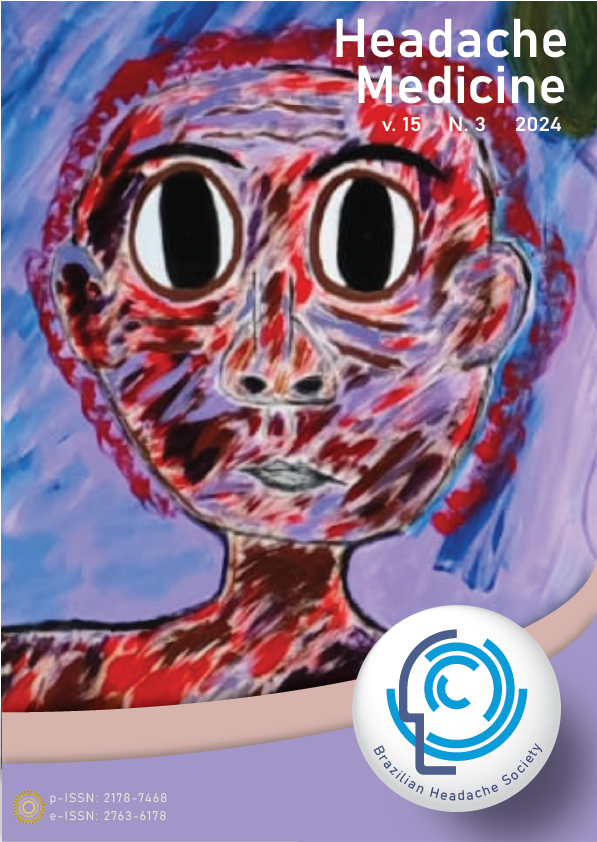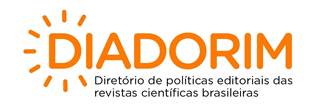Prevalence and profile of headache in school-going adolescents aged 10 – 19 years in Benin City: a cross sectional survey
Views: 713DOI:
https://doi.org/10.48208/HeadacheMed.2024.36Keywords:
Adolescent, headache, Prevalence, schoolAbstract
Introduction
Adolescent headaches significantly impact their daily functioning, academic performance, and quality of life. The occurrence of headaches is influenced by genetics, psychological stressors, and environmental exposures. Understanding these influences is crucial for effective management strategies.
Aim
To determine the prevalence, characteristics, and associated factors of headaches among school-going adolescents in Benin City, Nigeria.
Methods
This was a descriptive cross-sectional study among secondary school students. Using a structured questionnaire, data on sociodemographics, headache characteristics, triggers, and impacts were collected. The chi-square test was used to assess the association between the presence of headaches and categorical covariates. All analyses used a significance level of p<0.05.
Result
Of the 486 respondents 235 (48.4%) were boys and 251 (48.3%) were girls with a M:F ratio of 1:1.07. The mean age of the study participant was 13.7 (+ 1.78) years. The one-year prevalence of headache was 84%. 92 (18.9%) of those reporting headaches met the diagnostic criteria for chronic daily headache. The most common impact of headache was poor concentration (110; 22.6%). Psychological stress (55.3%) and poor sleep (26.1%) were the most commonly reported headache triggers.
Conclusion
More than four in five school-going adolescents have headache at one time in the past year. Reading and concentration problems are the most common adverse effect of headache in adolescents.
Downloads
References
Stovner LJ, Hagen K, Jensen R, et al. The global burden of headache: a documentation of headache prevalence and disability worldwide. Cephalalgia. 2007; 27: 193–210
https://www.who.int/data/gho/data/themes/mortality-and-global-health-estimates/global-health-estimates-leading-causes-of-dalys. Assessed 5th June, 2024
https://www.who.int/data/gho/data/themes/mortality-and-global-health-estimates/global-health-estimates-leading-causes-of-dalys. Assessed 13th June, 2024
Kolb S, Burchartz A, Krause L, Klos L, Schmidt SCE, Woll A, Niessner C. Physical Activity and Recurrent Pain in Children and Adolescents in Germany-Results from the MoMo Study. Children (Basel). 2022;9(11):1645
Nieswand V, Richter M, Gossrau G. Epidemiology of Headache in Children and Adolescents-Another Type of Pandemia. Curr Pain Headache Rep. 2020; 24(10):62
Onofri, A., Pensato, U., Rosignoli, C. et al. Primary headache epidemiology in children and adolescents: a systematic review and meta-analysis. J Headache Pain. 2023; 24: 8.
Antonaci F, Voiticovschi-Iosob C, Di Stefano AL, Galli F, Ozge A, Balottin U. The evolution of headache from childhood to adulthood: a review of the literature. J Headache Pain. 2014; 15(1):15.
Bron C, Sutherland HG, Griffiths LR. Exploring the Hereditary Nature of Migraine. Neuropsychiatr Dis Treat. 2021;17:1183-1194.
Pelzer N, Louter MA, van Zwet EW, Nyholt DR, Ferrari MD, van den Maagdenberg AM, Haan J, Terwindt GM. Linking migraine frequency with family history of migraine. Cephalalgia. 2019; 39(2):229-236.
Raucci U, Boni A, Evangelisti M, Della Vecchia N, Velardi M, Ursitti F, Terrin G, Di Nardo G, Reale A, Villani A, Parisi P. Lifestyle Modifications to Help Prevent Headache at a Developmental Age. Front Neurol. 2021; 11:618375.
Fukui P.T., Gonçalves T.R.T., Strabelli C.G., Lucchino N.M.F., Matos F.C., Santos J.P.M.D., Zukerman E., Zukerman-Guendler V., Mercante J.P., Masruha M.R., et al. Trigger Factors in Migraine Patients. Arq. Neuropsiquiatr. 2008; 66:494–499.
Elser, H., Kruse, C.F.G., Schwartz, B.S. et al. The Environment and Headache: a Narrative Review. Curr Envir Health Rpt . 2024; 11:184–203.
Baeza Moyano D, San Juan Fernández M, González Lezcano RA. Towards a Sustainable Indoor Lighting Design: Effects of Artificial Light on the Emotional State of Adolescents in the Classroom. Sustainability. 2020; 12(10):4263.
Krogh AB, Larsson B, Linde M. Prevalence and disability of headache among Norwegian adolescents: A cross-sectional school-based study. Cephalalgia. 2015; 35(13):1181-91.
Saylor D, Steiner TJ. The Global Burden of Headache. Semin Neurol. 2018; 38(2):182-190.
Stovner LJ, Andree C. Prevalence of headache in Europe: a review for the Eurolight project. J Headache Pain. 2010; 11(4):289-99.
Onofri A, Pensato U, Rosignoli C, Wells-Gatnik W, Stanyer E, Ornello R, et al. European Headache Federation School of Advanced Studies (EHF-SAS). Primary headache epidemiology in children and adolescents: a systematic review and meta-analysis. J Headache Pain. 2023; 24(1):8.
Ofovwe GE, Ofili AN. Prevalence and impact of headache and migraine among secondary school students in Nigeria. Headache. 2010; 50(10):1570-5.11
Bigley GK, Headache. In: Walker HK, Hall WD, Hurst JW, editors. Clinical Method: The History, Physical, and Laboratory Examinations. 3rd edition. Boston: Butterwoths; 1990. Chapter 54. Available from: https://www.ncbi.nlm.nih.gov/books/NBK377/.
Murinova N, Krashin D. Chronic daily headache. Phys Med Rehabil Clin N Am. 2015; 26 (2): 375-89.
Zewde, Y.Z., Zebenigus, M., Demissie, H. et al. The prevalence of headache disorders in children and adolescents in Ethiopia: a schools-based study. J Headache Pain. 2020; 21, 108
Fendrich K, Vennemann M, Pfaffenrath V, et al. Headache Prevalence Among Adolescents — The German DMKG Headache Study. Cephalalgia. 2007; 27(4):347-354.
Kawatu, N., Wa Somwe, S., Ciccone, O. et al. The prevalence of primary headache disorders in children and adolescents in Zambia: a schools-based study. J Headache Pain. 2022; 23, 118
Okamura MN, Goldbaum M, Madeira W, Cesar CLG. Prevalence of headache and associated factors among adolescents: results of a population-based study. Rev Bras Epidemiol. 2020; 23:e200067.
Abu-Arefeh I, Russell G. Prevalence of headache and migraine in schoolchildren. BMJ. 1994; 309(6957):765-9.
Laurell K, Larsson B, Eeg-Olofsson O. Prevalence of headache in Swedish schoolchildren, with a focus on tension-type headache. Cephalalgia. 2004; 24(5):380-8.
Wang SJ, Fuh JL, Lu SR. Chronic daily headache in adolescents: an 8-year follow-up study. Neurology. 2009; 73(6):416-22.
Visudtibhan, A., Siripornpanich, V., Khongkhatithum, C., Chiemchanya, S., Sirijunpen, S., Ruangkanchanasetr, S., & Visudhiphan, P. Migraine in Thai Children: Prevalence in Junior High School Students. Journal of Child Neurology. 2007; 22(9), 1117–1120.
Siniatchkin, M., Ansorge, U., Böckermann, I., Gerber, W. D., & Stephani, U. Muscle contraction pattern and habituation in episodic tension-type headache. Pain. 2011; 152(10): 1940-1948.
Pakalnis, A., Butz, C., & Splaingard, D. The influence of sleep patterns on headache severity in adolescent migraineurs. Headache: The Journal of Head and Face Pain. 2005; 45(10): 1375-1379.
Martin, P. R., Reece, J., & Forsyth, M. R. (2006). Cognitive-behavioral therapy versus temporal pulse amplitude biofeedback training for recurrent headache. Behavior Therapy. 2006; 37(2): 141-150.
Visudtibhan, A., Siripornpanich, V., Khongkhatithum, C., Chiemchanya, S., Sirijunpen, S., Ruangkanchanasetr, S., & Visudhiphan, P. Migraine in Thai Children: Prevalence in Junior High School Students. Journal of Child Neurology. 2007; 22(9): 1117–1120.
Milde-Busch, A., Straube, A., Heinen, F. et al. Identified risk factors and adolescents’ beliefs about triggers for headaches: results from a cross-sectional study. J Headache Pain. 2012; 13: 639–643.
Burch, R. C., Loder, S., & Loder, E. (2015). The prevalence and burden of migraine and severe headache in the United States: Updated statistics from government health surveillance studies. Headache: The Journal of Head and Face Pain, 2015; 55(1):21-34.
Lateef, T. M. Migraine in children and adolescents. Seminars in Pediatric Neurology. 2009; 16(3):191-200.
Wöber-Bingöl, Ç. (2013). Epidemiology of migraine and headache in children and adolescents. Current Pain and Headache Reports. 2013; 17(6): 341.
Downloads
- Supplementary 83
Published
How to Cite
Issue
Section
License
Copyright (c) 2024 Paul Ikhurionan, Imuwahen Mbarie (Author)

This work is licensed under a Creative Commons Attribution 4.0 International License.












